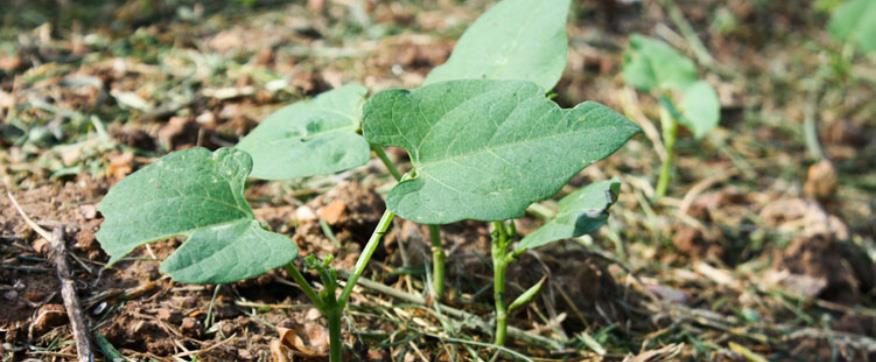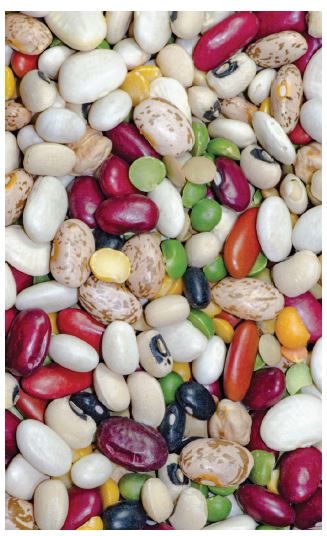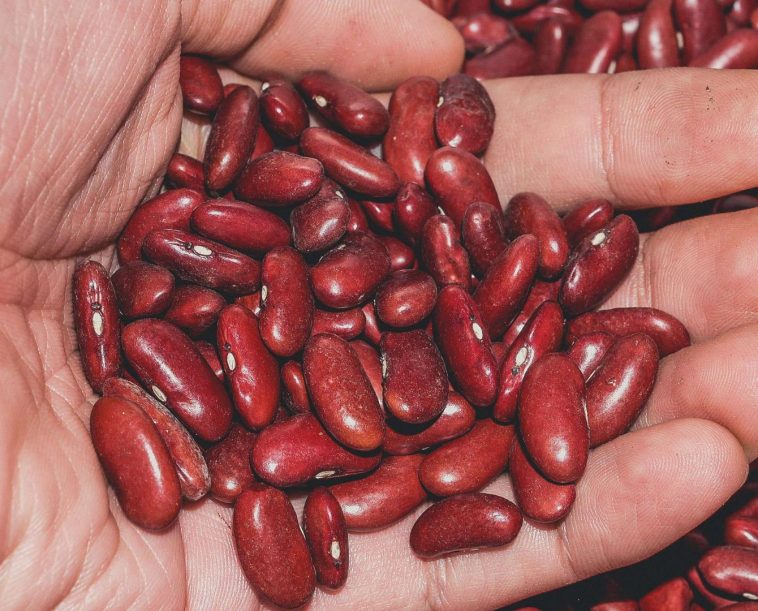Dry beans are an ecologically sound foodstuff in today’s world. Dry beans are one of the easiest crops to produce organically. Dry beans are an excellent source of protein when combined with whole grains, nuts or small quantities of poultry or fish.
Background
Dry beans (Phaseolus spp.) originated in Central and South America. Today field beans are the most widely cultivated species of Phaseolus and, in terms of tonnes of crop produced per year, they are the second most important legume in the world (soya beans are first).
Soil requirements
Dry beans have to be planted in warm soil (minimum temperatures preferably above 13 °C) after all danger of frost has passed. They perform best on fertile sandy loam to loam soils with good internal or tile drainage and moderate organic matter content. Soils with a pH from 5,8 to 6,5 are the best.
Climatic requirements
Dry beans are annual crops that thrive in a warm climate. They grow optimally at temperatures of 18 to 24 °C. The maximum temperature during flowering should not exceed 30 °C. Day temperatures below 20 °C will delay maturity and cause empty mature pods to develop.
Cultivars
The National Dry Bean Cultivar Trials are conducted by the Agricultural Research Council’s Grain Crops Institute (ARC-GCI) annually.

The secret of growing beans for drying is to make an early start as they require a long season.
Dry beans are classified into types according to:
Colour and seed size
- to 100 g/100 seeds); 5 to 10% of local production.
- Carioca beans (khaki stripes on a beige background) (20 to 25 g/100 seeds); 3 to 5% of local production.
- Alubia beans (large white) (45 to 55 g/100 seeds); 1 to 5% of local production.
Growth habit
- Type I: Determinate growth habit. They have a long stem and flowers on the tips of branches.
- Type II: Indeterminate growth habit, with few short and perpendicular growing side-branches, grows after flowering.
- Type III: Indeterminate growth habit, have very long and flat running side-branches.
Growing season
Temperatures, especially during the night, determine the length of the growing season of a cultivar. Short (85 to 94 days); medium (95 to 104 days); long (105 to 115 days).
Cultivation practices
Propagation
Dry beans are propagated by seeds.
Soil preparation
The seedbed must be deep, level and firm as this ensures better surface contact between the seed and the soil, increasing the absorption of moisture. A levelled seedbed also facilitates planting to a uniform depth.
Fertilisation
It is recommended that beans be planted on soils that have been well fertilised in advance. General fertility is more advantageous than direct fertilisations, as beans are sensitive to high concentrations of mineral salts.
Planting
Planting dates are mainly restricted by the possible occurrence of frost (planting too late) and rain at harvesting which results in poor quality (planting too early). Planting dates range from November to mid-January in areas where frost occurs. In frost-free areas, March and April are the best months for planting beans. The large white kidney bean (P. coccineus) is an exception and is planted from mid-November to mid-December and is not adapted to winter production. The seeds are placed at 2,5 to 7 cm below the surface.
Irrigation
Sprinkler irrigation is the most common means of irrigation for dry beans. In areas where water is unrestricted (not merely supplementary irrigation), the soil should be wet to field capacity to the depth of the 1 m root zone before planting. The critical, moisture-sensitive growth stages are flowering and early pod set which occurs at 40 to 50% and 50 to 60% of the growing season.
Weed control
Efficient weed control is a prerequisite for high dry bean yields. Dry beans compete poorly with weeds as they are low growing plants and do not easily overshadow weeds. Early control is extremely important because the root system of the plant develops at this stage and some weeds secrete chemical substances that limit plant growth. At a later stage, weeds hamper the harvesting and threshing processes and adversely affect the quality of the crop.
Soil requirements
Dry beans have to be planted in warm soil (minimum temperatures preferably above 13 °C) after all danger of frost has passed. They perform best on fertile sandy loam to loam soils with good internal or tile drainage and moderate organic matter content. Soils with a pH from 5,8 to 6,5 are the best.
Pest and disease control
Diseases and pests may have been partially responsible for the unstable production that has been experienced in the past. Incidence and severity vary between seasons due to environmental and management practices. Integrated disease and pest management, using all suitable control measures, is recommended.
Harvesting
Dry beans have a moisture content of 50% at physiological maturity. The beans, however, are only ready for harvesting when the moisture content drops to 16%, the ideal being 15%.
Seeds may split during threshing when the moisture content is less than 12%. Such seeds are rejected by canners and seed companies, and are difficult to clean without further seed split or broken seed coats occurring. Dry beans should be harvested when all the pods have turned yellow, but before they have become so dry that the pods begin to shatter.

Importance and uses
Human uses: Dry beans are used in soups, chilli dishes, baked beans, casserole recipes, refried bean paste, fresh salads, and can be purchased as dried or previously canned and cooked products. Dry beans are also regarded as suitable protein supplements for lower-income societies.
Livestock feed: Beans that do not meet human food quality standards can be utilised for feeding livestock.
Other uses: It can be used for soil improvement because of its nitrogen fixation ability, and also as green manure, increasing organic matter in the soil. Therefore it is best to use it in a crop rotation cycle.
The information provided in this article is credited to the South African Department of Agriculture, Forestry and Fisheries. For more information, visit their website at www.daff.gov.za, contact them on +27(0)12-319-6072 or send an e-mail to DPP@nda.agric.za









